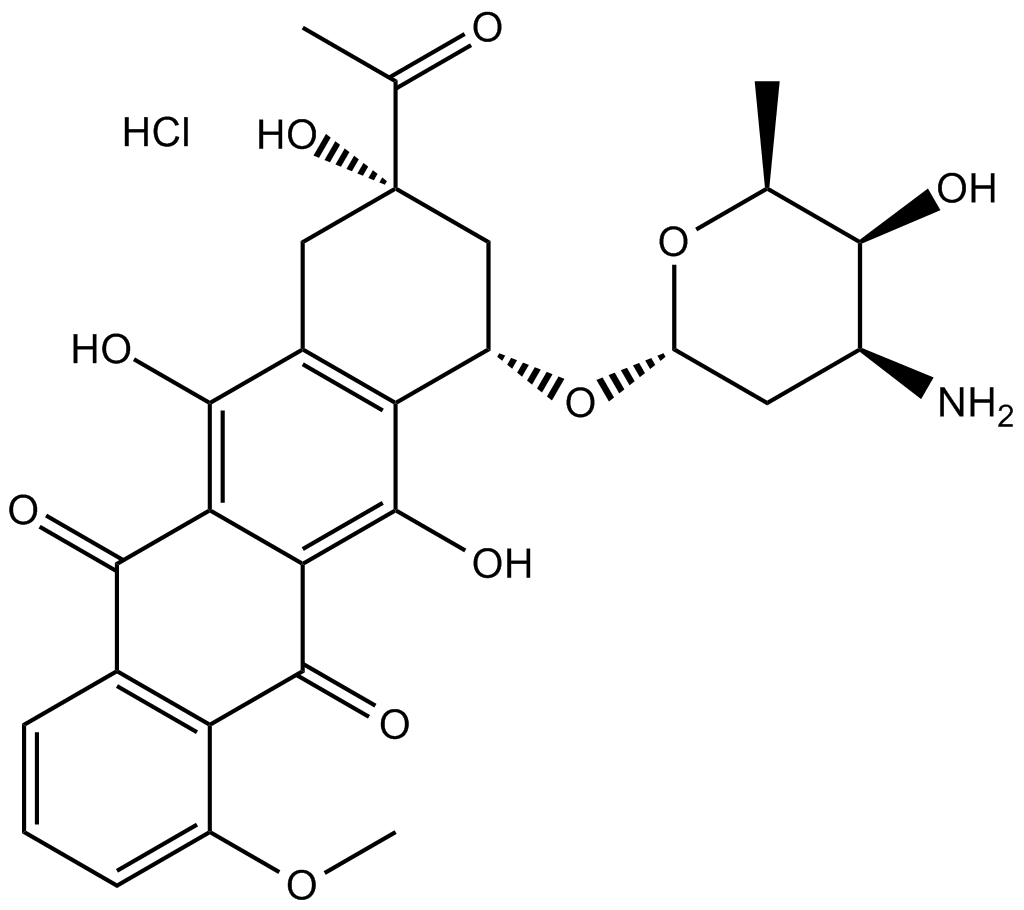Daunorubicin HCl (Synonyms: NDC 00824155, Ondena, RP 13057) |
| Catalog No.GC10354 |
Daunorubicin (Daunomycin) hydrochloride is a topoisomerase II inhibitor with potent anti-tumor activity.
Products are for research use only. Not for human use. We do not sell to patients.

Cas No.: 23541-50-6
Sample solution is provided at 25 µL, 10mM.
Daunorubicin HCl is an inhibitor of DNA topoisomerase II [1].
Daunorubicin is an anthracycline antibiotic. It is also used as an effective chemotherapeutic agent against tumors especially acute myeloid leukaemia and acute lymphocytic leukaemia. Daunorubicin can affect the metabolism and synthesis of DNA and RNA. In the in vitro assay, daunorubicin inhibits the incorporation of thymidine and uridine into L1210 cells. It also inhibits the incorporation of labeled precursors into the isolated DNA and RNA from incubated cells. When treated with leukemic cells isolated from acute lymphocytic leukemia patients, daunorubicin significantly inhibits the biosynthesis of the DNA and RNA macromolecules [2, 3].
References:
[1] Hande K R. Etoposide: four decades of development of a topoisomerase II inhibitor. European Journal of Cancer, 1998, 34(10): 1514-1521.
[2] Momparler R L, Karon M, Siegel S E, et al. Effect of adriamycin on DNA, RNA, and protein synthesis in cell-free systems and intact cells. Cancer Research, 1976, 36(8): 2891-2895.
[3] Meriwether W D, Bachur N R. Inhibition of DNA and RNA metabolism by daunorubicin and adriamycin in L1210 mouse leukemia. Cancer research, 1972, 32(6): 1137-1142.
Average Rating: 5 (Based on Reviews and 28 reference(s) in Google Scholar.)
GLPBIO products are for RESEARCH USE ONLY. Please make sure your review or question is research based.
Required fields are marked with *




















